The iconic Triceratops, with its three distinctive facial horns and massive bony frill extending from the back of its skull, remains one of the most recognizable dinosaurs to have ever walked the Earth. Living during the late Cretaceous period approximately 68 to 66 million years ago, these rhinoceros-sized herbivores have captivated scientists and dinosaur enthusiasts alike.
While the horns seem useful for defense, the purpose of their elaborate frills—shield-like structures that could reach over 3 feet in length—has been the subject of scientific debate for decades. Various theories have emerged, evolved, and sometimes been discarded as new fossil evidence and analytical techniques have developed. From protection to temperature regulation, sexual display to species recognition, the possible functions of this distinctive anatomical feature offer fascinating insights into dinosaur biology and behavior.
The Anatomical Structure of the Triceratops Frill
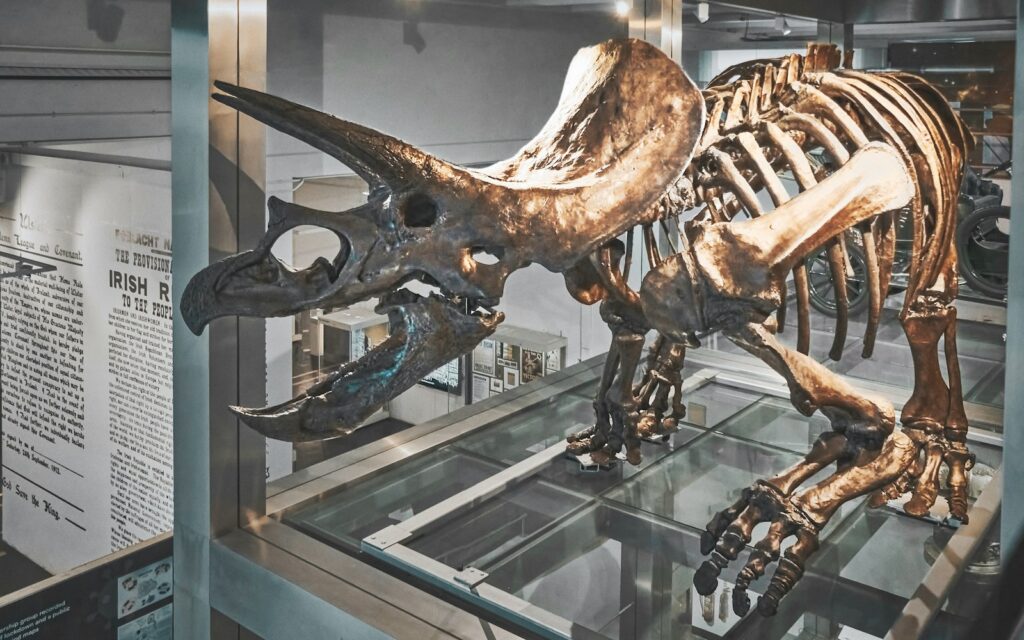
The Triceratops frill wasn’t simply a flat shield but a complex structure composed of bone covered by keratin—the same material found in human fingernails and bird beaks. Technically known as the “parietal-squamosal frill,” this structure extended backward from the skull, creating a distinctive silhouette when viewed from any angle.
Unlike some other ceratopsians (horned dinosaurs), the Triceratops frill was solid rather than containing large fenestrae (openings), which has significant implications for its possible functions. The frill connected to powerful neck muscles and contained blood vessels that ran through channels in the bone, suggesting it was a living, active part of the animal’s anatomy. Additionally, fossil evidence indicates that the frill continued to grow throughout the dinosaur’s lifetime, potentially changing in shape and proportion as the animal matured.
The Classic Defense Theory

The earliest and perhaps most intuitive explanation for the Triceratops frill was that it served as a protective shield against predators—particularly Tyrannosaurus rex, which shared its habitat in Late Cretaceous North America. Proponents of this theory point to the substantial coverage the frill provided for the neck, a vulnerable area in many animals.
The solid bone structure of the Triceratops frill, unlike the “windows” present in relatives like Centrosaurus and Styracosaurus, would have potentially offered better protection against bites. Some fossils show potential bite marks or damage to frills, which some researchers interpret as evidence of predatory attacks.
However, critics note that the positioning of the frill would have made it difficult to effectively shield the neck during a frontal attack, which is how large predators typically approach prey. Additionally, if defense were the primary function, one might expect even more robust development of this feature.
Predator Deterrence Beyond Physical Protection

Beyond serving as literal armor, the impressive frill might have functioned as a psychological deterrent to potential predators. The substantial frill would have made Triceratops appear significantly larger when viewed head-on, potentially intimidating even large predators like Tyrannosaurus rex. This “size exaggeration” strategy is seen in modern animals such as frilled lizards, which expand their neck frills to appear more formidable when threatened.
The visual impact would have been even greater if, as some paleontologists suggest, the frill edge was adorned with keratin spikes or colorful patterns that haven’t been preserved in the fossil record. Research into predator-prey psychology suggests that unusual shapes or sudden increases in apparent size can trigger hesitation in predators, potentially giving Triceratops valuable seconds to prepare a defense with its horns or escape. However, this theory remains challenging to test using only fossil evidence.
Thermal Regulation Hypothesis

The extensive surface area of the Triceratops frill has led some scientists to propose that it may have played a role in thermoregulation, similar to the function of an elephant’s ears or a stegosaur’s plates. The thin bone of the frill contained numerous blood vessels, evidenced by the grooves and channels preserved in fossil specimens.
These vessels could have allowed blood to flow close to the surface, where heat could be lost to the surrounding air when the animal needed to cool down. Conversely, by controlling blood flow to the frill, Triceratops might have been able to conserve heat in cooler conditions. This hypothesis aligns with what we understand about the metabolism of large dinosaurs, which likely faced challenges in regulating body temperature due to their size.
Computer models examining heat exchange based on frill size and vasculature have provided some support for this theory, though it remains difficult to prove definitively without living specimens to study.
Species Recognition and Communication
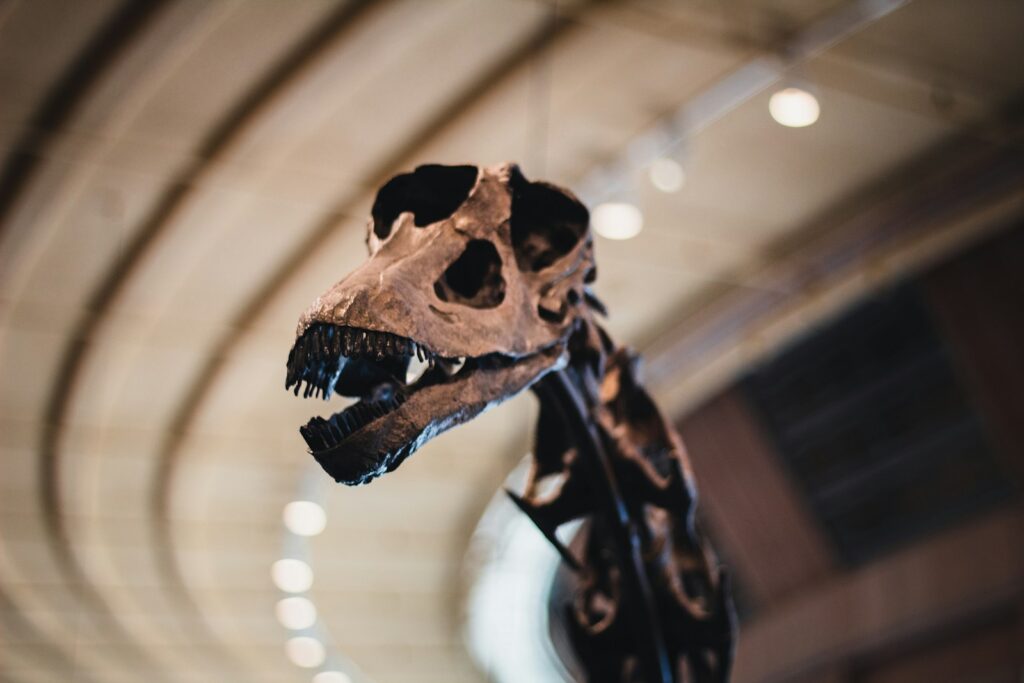
The distinctive shape of the Triceratops frill may have served as a visual signal that allowed individuals to quickly and accurately identify members of their own species—a vital ability in ecosystems where multiple horned dinosaur species coexisted. This “species recognition” hypothesis has gained support as paleontologists have documented the remarkable diversity of frill and horn configurations among ceratopsians that lived in proximity to one another. The unique profile created by the Triceratops frill would have been visible from considerable distances across the plains and forests of Late Cretaceous North America.
Moreover, if the frills were adorned with distinctive colors or patterns (which wouldn’t normally preserve in fossils), their value as species identifiers would have been even greater. This explanation accounts for why closely related species often evolved dramatically different head ornamentations while maintaining similar body forms, as the need to avoid mating mistakes would have driven selection for increasingly distinctive cranial features.
Sexual Selection and Mate Attraction

Perhaps the most widely accepted modern theory suggests that the elaborate frill of Triceratops evolved primarily through sexual selection—the evolutionary process whereby certain traits become more common because they enhance mating success. Under this hypothesis, larger, more impressive frills may have been preferred by potential mates, similar to how peahens prefer peacocks with more elaborate tail displays.
Supporting this theory is evidence of sexual dimorphism in some ceratopsian species, where differences between male and female frill structures have been documented. The substantial biological investment required to grow and maintain such an elaborate structure suggests it likely conveyed important information about the individual’s genetic quality, health, or competitive ability.
Additionally, if the frills were brightly colored or patterned, as many researchers suspect, they could have served as spectacular visual displays during courtship rituals. This sexual selection hypothesis also explains why the frills continued to evolve to be more elaborate over time, as competition for mates drove the development of increasingly impressive ornamentations.
Intraspecific Combat and Dominance Displays
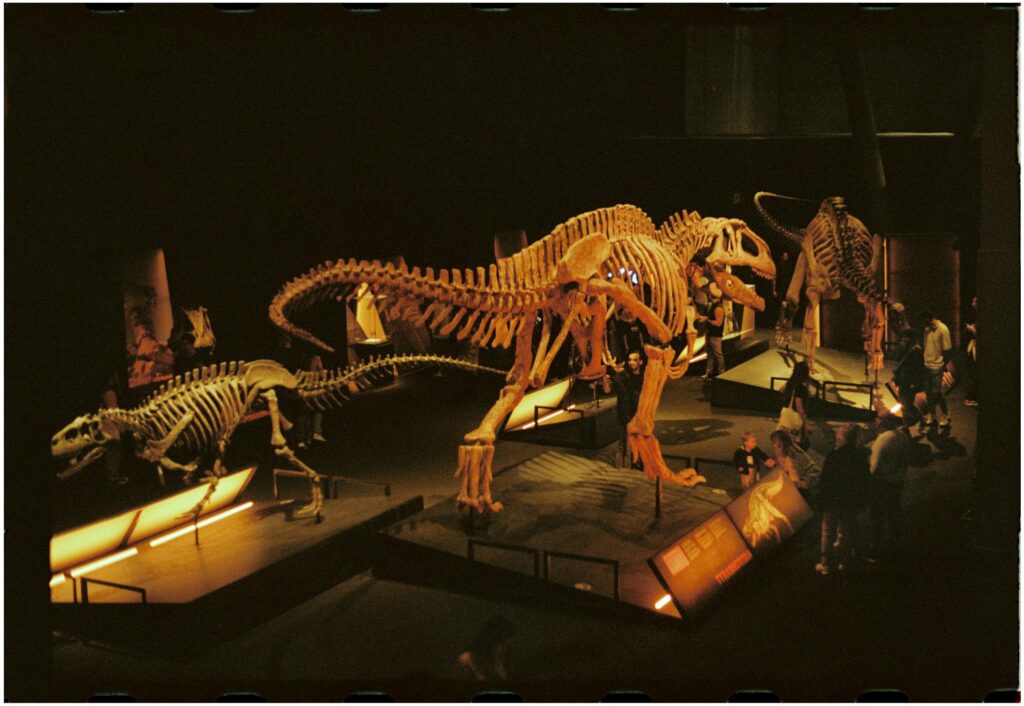
Closely related to sexual selection is the hypothesis that Triceratops frills played a role in competition between members of the same species, particularly males vying for mating rights or territory. Rather than direct physical combat using the frill itself, the size and condition of the frill could have signaled an individual’s fighting ability, health, and status.
This “assessment” function would have allowed Triceratops to establish dominance hierarchies with reduced physical conflict, similar to how red deer use their antlers for both display and combat. Some ceratopsian fossils show evidence of healed injuries consistent with intraspecific combat, suggesting these dinosaurs engaged in competitive interactions.
The frill’s visibility from various angles would have made it particularly effective for side-by-side assessment displays, where rivals could compare their ornaments before deciding whether to escalate to a physical confrontation. By serving as an honest signal of condition and fighting ability, elaborate frills may have helped minimize dangerous physical confrontations while still ensuring that the fittest individuals gained reproductive advantages.
Muscle Attachment and Head Support
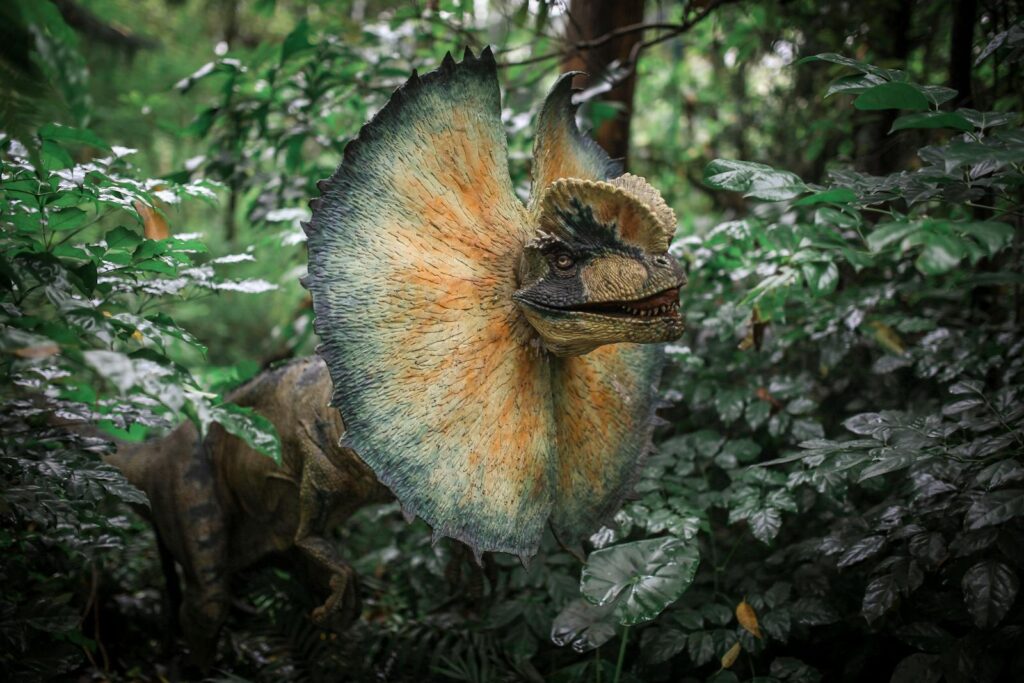
A more practical and less showy explanation for the Triceratops frill relates to its potential role in the dinosaur’s musculoskeletal system. The edges of the frill served as attachment points for powerful neck muscles that would have been essential for supporting and moving the animal’s massive head, which could weigh hundreds of pounds with its bony frill and three horns.
Paleontological analysis of the muscle attachment sites on Triceratops skulls indicates substantial musculature connected to the frill, suggesting it played a structural role beyond display or defense. This muscle attachment hypothesis explains why the frill maintained its solid structure rather than evolving the weight-saving holes seen in other ceratopsians.
The positioning and orientation of muscle scars on fossil specimens have allowed researchers to reconstruct the likely arrangement of neck and head muscles, revealing how the frill may have acted as a counterbalance to the weight of the face and horns. This biomechanical advantage would have been increasingly important as Triceratops evolved longer and heavier horns.
Multiple Functions Theory

Rather than serving a single purpose, the Triceratops frill likely evolved to fulfill multiple functions simultaneously—a concept known as functional multiplicity in evolutionary biology. This comprehensive view acknowledges that natural selection often favors structures that can serve several adaptive roles at once. For instance, the frill could have initially evolved for muscle attachment, but its expansion due to sexual selection pressures could have subsequently made it useful for thermoregulation or predator deterrence.
The extensive blood vessel network in the frill supports both display and thermoregulatory functions, while its size and position would have conferred some protective benefits regardless of whether that was its primary purpose. Modern examples of multifunctional anatomical structures include deer antlers (used for combat, display, and sometimes foraging) and elephant tusks (used for digging, lifting, defense, and display).
This multiple functions theory is gaining acceptance as scientists recognize that evolution rarely produces single-purpose adaptations, particularly for such metabolically expensive structures as the Triceratops frill.
Evidence from Growth Patterns

Studies of Triceratops fossils representing different growth stages have provided valuable insights into how the frill developed throughout an individual’s lifetime, potentially illuminating its purpose. Juvenile specimens show that young Triceratops had proportionally smaller, less elaborate frills that grew more dramatically as the animals approached sexual maturity.
This ontogenetic (growth-related) pattern strongly supports hypotheses related to sexual selection and mate attraction, as the structure became more prominent precisely when it would have been needed for reproductive purposes. The growth trajectory also reveals that the blood vessel channels in the frill became more numerous and complex in adults, suggesting an increased role in display or thermoregulation with age.
Additionally, the bone texture of the frill changes during development, with adults showing more evidence of remodeling and vascularization. These growth-related changes align with what we would expect if the frill served in sexual competition and display rather than primarily for defense, which would likely require substantial protection even in younger individuals.
Comparative Evidence from Other Ceratopsians
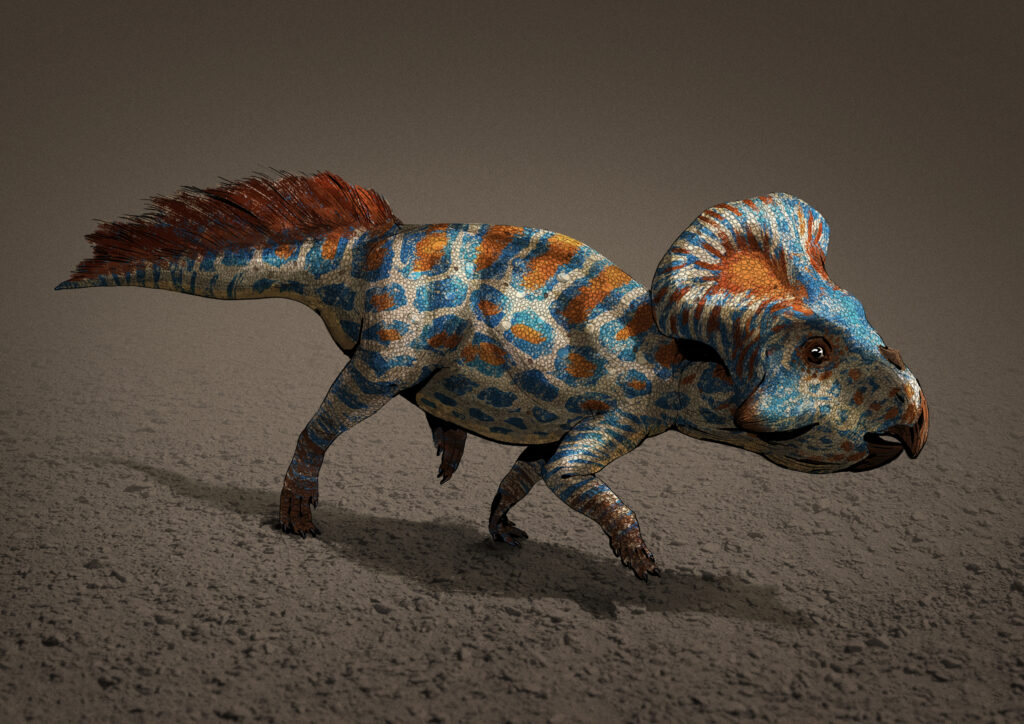
Examining the diverse array of frill structures across the Ceratopsidae family provides contextual evidence for understanding the Triceratops frill. Relatives like Chasmosaurus had extremely elongated frills with large openings, while Styracosaurus combined a moderate frill with elaborate horn arrays, and Protoceratops had a modest frill but no true horns.
This diversity suggests that the frills were evolutionarily plastic and likely under strong selective pressure, consistent with display or species recognition functions. The solid structure of the Triceratops frill stands in contrast to the fenestrated (windowed) frills of many other ceratopsians, which would have been less effective for defense but lighter and potentially more effective for display.
The evolutionary timing is also telling—frills appear to have become more elaborate over time across most ceratopsian lineages, a pattern consistent with sexual selection driving increasingly extreme ornamentations. Additionally, the geographic distribution of different frill morphologies suggests that where multiple ceratopsian species lived in proximity, their frills evolved to be more distinctly different from one another, supporting the species recognition hypothesis.
Modern Analogs and Insights
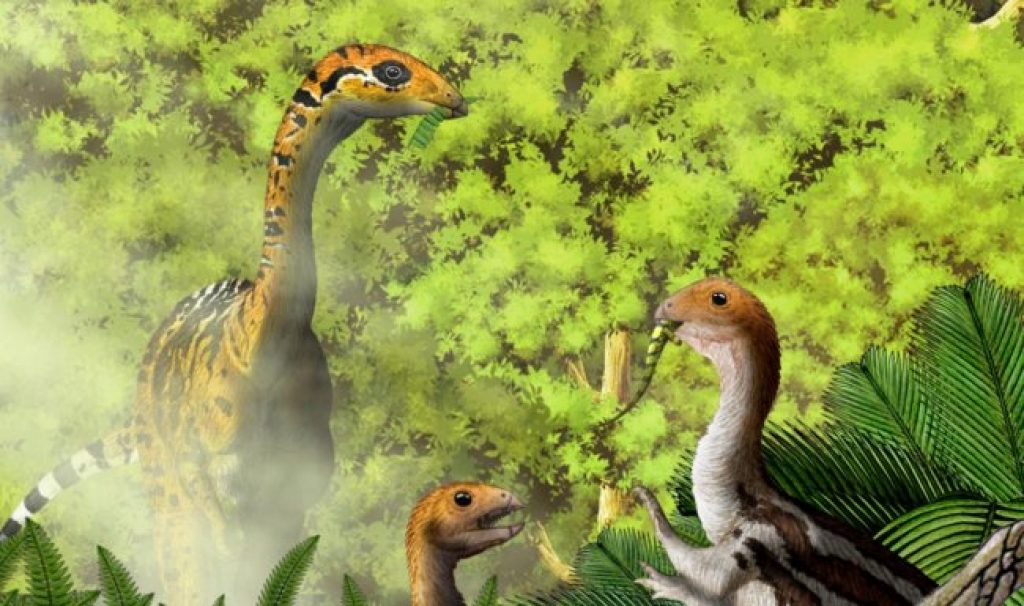
While no living animals have structures exactly like the Triceratops frill, examining modern species with similar anatomical features can provide useful insights. The casques of cassowaries, elaborate crests on chameleons, and wide-flared horns of bovids all serve multiple functions, including display, species recognition, and thermoregulation.
Studies of modern rhinoceros beetles have demonstrated how seemingly cumbersome headgear can evolve when sexual selection pressures are strong, even if they impose some costs on their bearers. Of particular relevance are the frills of modern lizards, which serve in threat displays and species recognition, and the elaborate horns of beetles and bovids used in male-male competition.
Importantly, research on living animals reveals that visually striking structures almost universally serve communication functions, whether attracting mates, deterring rivals, or warning predators. The complex relationship between form and function observed in modern animals suggests that the Triceratops frill, with its elaborate structure and considerable metabolic cost, almost certainly played an important role in visual communication rather than serving solely as physical protection.
Future Research Directions

Understanding the purpose of the Triceratops frill remains an active area of paleontological research, with several promising avenues for future investigation. Advanced imaging techniques now allow scientists to examine the internal structure of fossils non-destructively, potentially revealing more details about blood vessel patterns and bone growth that could clarify the frill’s function.
Biomechanical modeling using sophisticated computer simulations can test hypotheses about the frill’s effectiveness for defense, thermal regulation, or mechanical support under different conditions. Studies of bone histology—examining microscopic features of frill bones—may reveal growth patterns and remodeling consistent with particular functions. Comparative analyses across wider ranges of ceratopsian specimens, including newly discovered species, will provide greater context for understanding the evolution of these structures.
Additionally, new techniques for inferring the coloration of extinct animals may eventually allow paleontologists to reconstruct the appearance of Triceratops frills, which would provide significant insights into their role in visual display. As these methodologies advance, our understanding of this iconic dinosaur’s features will continue to deepen and evolve.
Conclusion
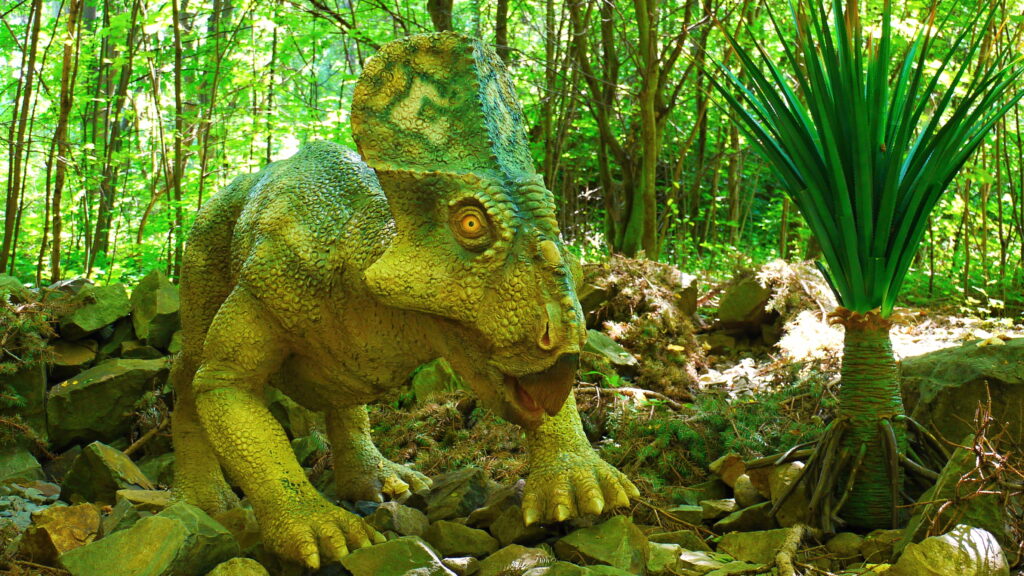
The Triceratops frill remains one of paleontology’s most engaging puzzles, likely representing an evolutionary compromise that served multiple functions simultaneously. Current evidence strongly suggests that sexual selection and species recognition were primary drivers of its evolution, with potential secondary benefits for thermoregulation, muscle attachment, and predator deterrence. Rather than viewing these explanations as competing theories, modern paleontologists increasingly recognize that complex structures often serve multiple adaptive purposes.
The frill that makes Triceratops instantly recognizable to modern humans probably served a similar recognition function 66 million years ago, allowing these dinosaurs to identify potential mates and rivals at a glance across the Cretaceous landscape. As research techniques continue to advance, our understanding of these magnificent structures will only deepen, revealing more about how these iconic dinosaurs lived, competed, and survived in their ancient world.



